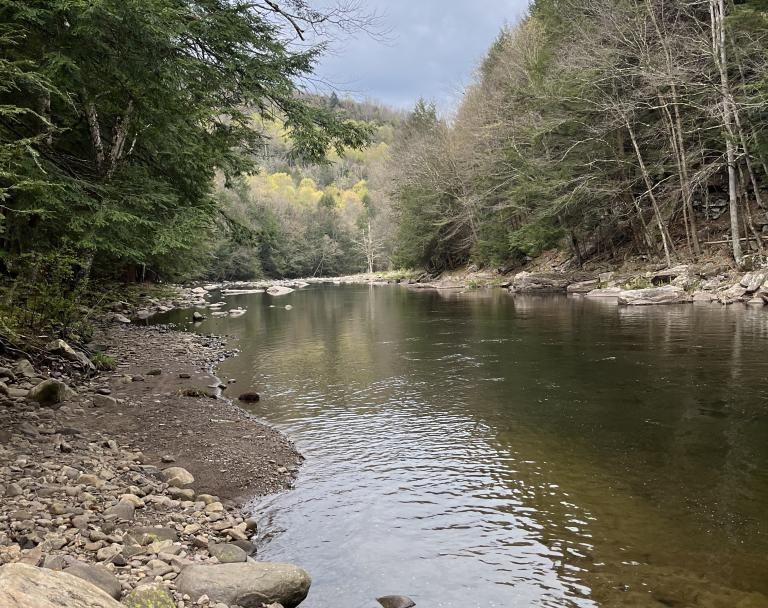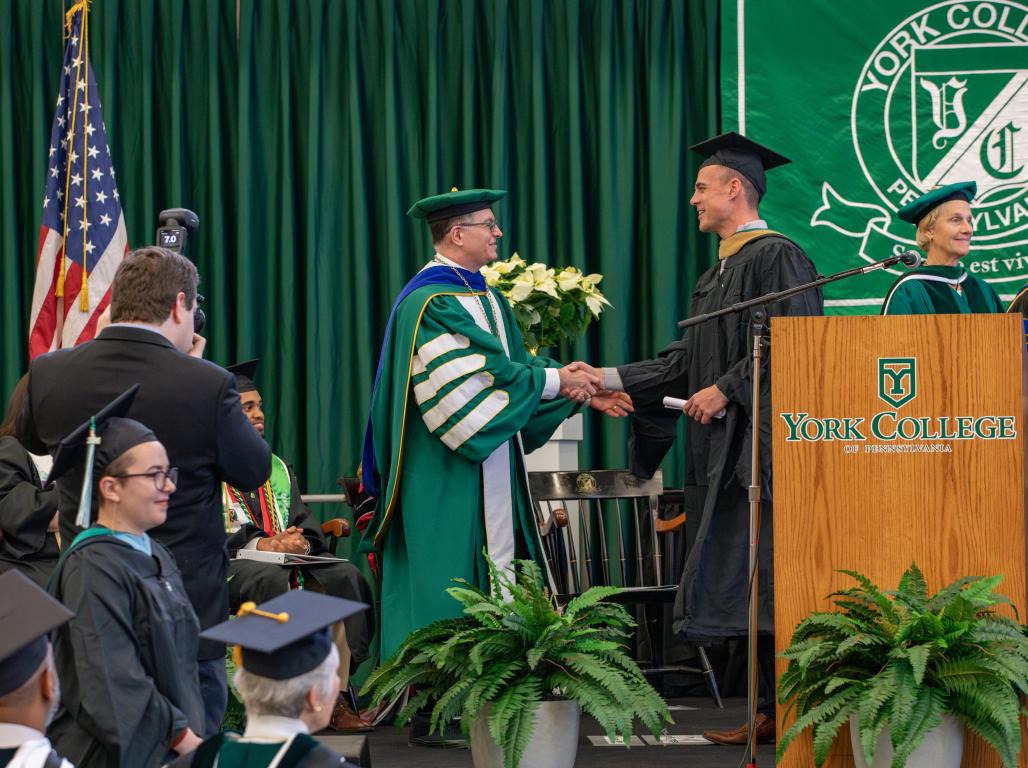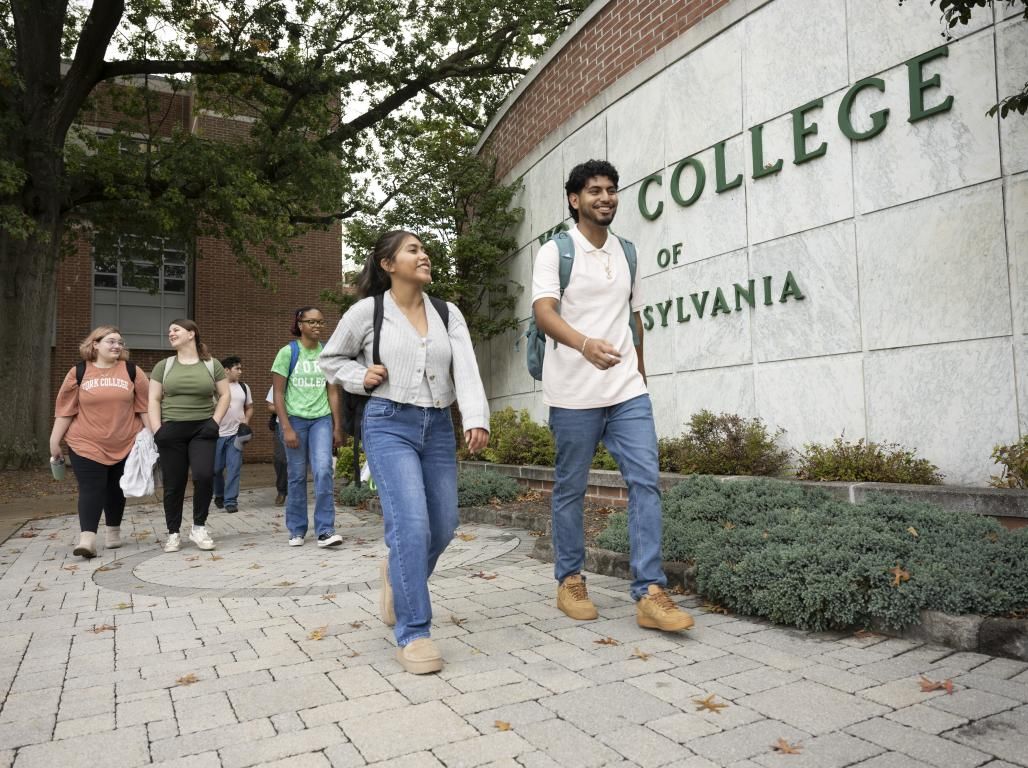Designed For Action: Biology Students Explore Turtle Migration At Lake Williams Dam Project

At York College, students aren’t just reading textbooks and listening to lectures. They’re working on community projects, solving real-world problems, and using their education to effect change. In Designed for Action, we meet the students who are making an impact outside of the classroom.
York Water Company’s Lake Williams dam project did more than replace a 100-year-old infrastructure component. It created an opportunity for collaboration with York College of Pennsylvania and other entities to preserve and protect the wildlife affected by the construction and enhance wildlife habitat, especially native species of aquatic turtles.
The work by the York Water Company and engineering and infrastructure specialist Gannett Fleming was designed to protect the local ecosystem. But it also provides a unique chance for York College students to conduct hands-on research and conservation efforts. For the next five years, they will study the native turtles’ habits and migration between Lake Redman and Lake Williams, which constitute the water company’s reservoir.
Turtles Gone Missing
Steven Metzler, P.E. ’86, who earned his associate degree in Science with a focus on Chemistry at York College, is a senior engineering project manager at the York Water Company. David Graff, SPWS, SCE, CWB is Principal Environmental Scientist and Natural Resources Manager at Gannett Fleming and holds undergraduate and graduate degrees in environmental studies. Metzler and Graff combined their expertise to guide the multifaceted project since its inception in 2021.
From dam demolition to reconstruction, their roles encompassed project management, environmental preservation, wildlife relocation, and habitat restoration. Originally, the project called for relocating native turtles from Lake Williams to Lake Redman before the former was drained to prepare for construction under a permit issued by the Pennsylvania Fish and Boat Commission (PFBC).
“We did many surveys to confirm their presence in the reservoir,” Graff says of the turtles. “But when we went to trap them, we didn’t find as many as we thought. Many had already relocated on their own as water levels were lowered.”
As Lake Williams refills, rather than conducting the potentially stressful re-trapping efforts to relocate turtles back into the reservoir, the managers turned to York College to institute a five-year research program of monitoring turtle migration and habits, which was approved by the PFBC.
A Micro Wildlife Sanctuary
One of the pivotal components in rebuilding the dam was the construction of two Habitat Islands, referred to by the project team as “Turtle Islands,” a sanctuary in the middle of Lake Williams designed to support the native aquatic wildlife species in a protected ecosystem. Before the dam reconstruction, there were no existing island complexes in the reservoir. Turtle Islands provide refuge and basking areas away from the reservoir edges to provide additional habitat needs and a little natural separation from some predators and disturbing influences to maintain and promote key features essential for the turtles’ survival.
The micro wildlife sanctuary consists of two island complexes built in Lake Williams, each of them one-fifth of an acre with two small land lobes always exposed that are planted with native shrubs and aquatic wetland plants. From the top of the lobes, the terraced islands descend to the water. The islands provide a refuge not only for native turtles but for fish, migratory birds, and other aquatic wildlife.
“We looked at the need for environmental diversity,” says Graff. “There was a lot of edge habitat but no islands. The islands create this little sanctuary in the middle of the reservoir.”
The islands also offer an excellent observation point for research. Under the guidance of Associate Professors of Biology Bridgette Hagerty, Ph.D., and Jessica Nolan, Ph.D., York College students will conduct research on aquatic basking turtles in both lakes.
The students will estimate turtle populations, monitor basking behavior, and document the animals’ movement between the lakes over five years. By studying the turtles’ activities, Metzler and Graff hope the students gain insights into the adaptability and habits of native species. The research findings will be submitted to the PFBC at the end of the project.
Hands-On Research With Real-Life Impact
The research venture between York College’s Biology program and the York Water Company is the latest effort in a long history of collaboration. The project is expected to provide other opportunities for partnerships across disciplines.
“We’ve already had a strong partnership with York College. We’ve have had numerous civil engineering interns with us for years, and we see that continuing,” says Metzler. “However, this is the first partnership we’ve ever had with the Biology Department. I could envision other partnerships in the future.”
Beyond their immediate impact, the Turtle Islands and the other conservation initiatives resulting from the dam replacement hold promise for future projects and conservancy efforts. In two such moves, the York Water Company is converting some areas downstream of the dam into wetlands that are also accessible to hikers. They have planted 300 native hardwood and evergreen trees to replace those that were harvested to create an access road to the dam. Seventy-six trees will soon be planted in an upslope area disturbed by the construction.
The dam replacement and the creation of Turtle Island were completed in a project driven by stewardship, scientific research, and extensive collaboration among the entities involved.
“A partnership is very powerful,” says Metzler. “When you have the project’s owner, engineer, and contractor working together with the regulatory agencies―from the Army Corps of Engineers to Pennsylvania Department of Environmental Protection and the York County Conservation District―it’s everybody’s project, and we’re all honored to work on it.”
“This project required every person at every level,” adds Graff. “We keep coming back to the table to make sure everyone is on board, from federal to local to state to private sector. If the students understand how that works, having real-world experiences while you’re at school, they can really know what it means to be this type of engineer or scientist. It has a real-life impact on applying academics to a tangible project and envisioning a potential career path and future job role.”




